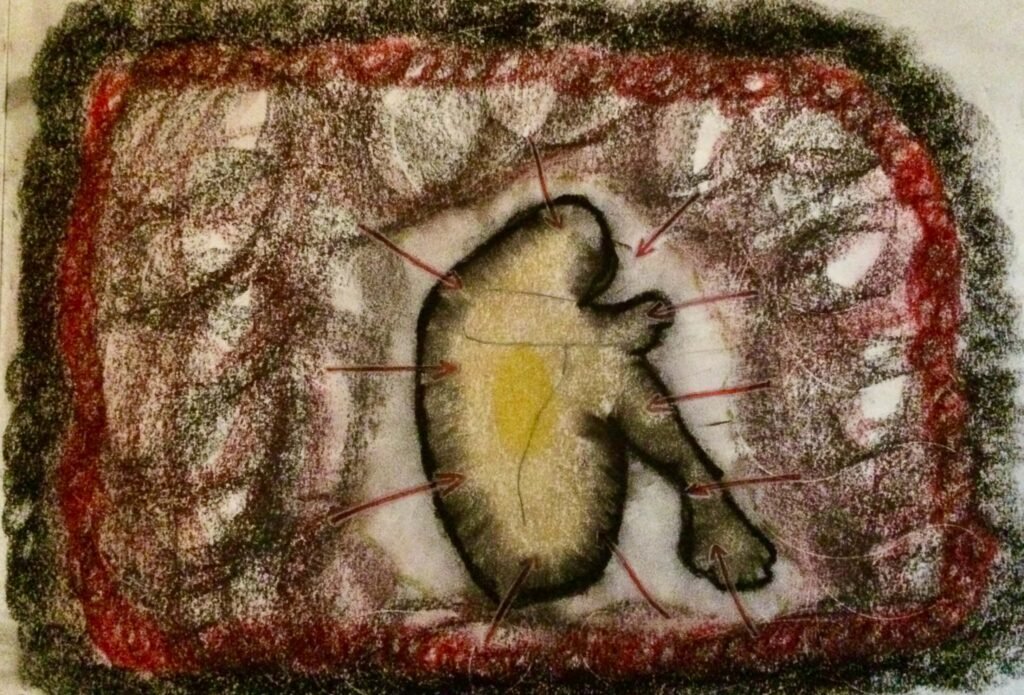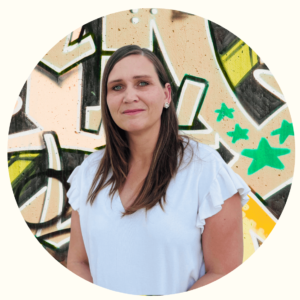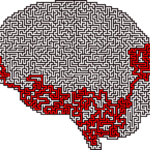Its Suspected Relationship To Developing Type 1 Diabetes
Summary: The author delves into personal trauma preceding their Type 1 Diabetes (T1D) diagnosis, despite having no ACEs. They explore prenatal trauma suspicions, emotional isolation as an infant, and a family history of abandonment. This trauma hypothesis extends to their T1D onset, suggesting a transgenerational impact. Post-diagnosis, familial PTSD-like responses compound healing challenges.
I talked in my last post here about my suspicion that Type 1 Diabetes may be a trauma response. The bit that I left out was my own experience. I wanted to just get through the material and build an understanding of how trauma relates to T1D. Now, it’s my turn to step into the spotlight and talk about my own experience of trauma.
According to the Adverse Childhood Experiences (ACE) questionnaire, I would have an ACE score of zero. Yep, that’s right… Nada. Before being diagnosed with T1D at 17 months of age, I didn’t suffer from any kind of abuse (physical, emotional or sexual). I wasn’t neglected (physical or emotional). I also did not live in a household that had mental illness, domestic violence, divorce, or substance abuse. I had no relatives imprisoned for any reason. I had a stable family home. There was love.
I do, however, believe that I suffered multiple experiences of trauma before reaching 17 months old. My first hint of this trauma came when I was asked by my therapist what my trauma looked like. This is what I drew…

When I started drawing it, I think I was trying to draw a depiction of myself as an adult, curling up in a ball to fend off the overwhelming world around me. But, as the picture unfolded, a foetus in the womb emerged.
About a month after drawing this, I discovered the work of Stanislav Grof. He delineated four stages that a baby goes through during the birthing process, stages he called the ‘basic perinatal matrices’. The second perinatal matrix, which is associated with the onset of labour, has a diagram that is almost a duplicate of my drawing. Although I will never know for sure, I suspect that my drawing is suggesting to me that perhaps I suffered from trauma during the birthing process.
I asked my mum about her pregnancy with me and the birth. All was uneventful. She said I was the easiest of her pregnancies and births. However, she did also tell me that it took a while after I was born for the placenta to be removed. She also said that, when it was removed, the doctors were very excited because it was a funny shape. They actually took it and preserved it in a jar as a medical specimen for generations to come. My mum was never told what this was. I suspect it may have been a circumvallate placenta. This is a rare phenomenon, which occurs in only about 1% of pregnancies. This is an abnormality of the placenta where the membranes become deformed. It results in a malformed placental shape and often produces poor or no functioning in the placenta. It can even result in miscarriage and preterm birth. I wonder if this is what happened to me. I experienced the womb as a traumatic environment, unpredictable in its supply of nutrients and oxygen on which my life depended. I was scared and traumatised before I even arrived in the world. Perhaps this was what my drawing was representing.
I was a wanted and expected child. I was second born to my older brother. My mum was thrilled to have her perfect family unit… Mother, father, son and daughter. However, finances were tight so my mum had to go back to work two weeks after I was born. She worked from home so I was not left with anyone else at such a young age. i wasn’t abandoned. However, I do suspect I had more isolation than I could tolerate well at such a young age.
I have a memory that came to me a few years ago… I say that it came to me because I did not ‘have’ the memory like you have a memory of your last birthday. This arrived as a body memory during a therapy session. I remember being a baby, lying in my cot. I was alone. I was staring around. I felt scared by the bars of the cot, I felt trapped. But I didn’t cry. I somehow already knew that there was no point. I wouldn’t be responded to. Some may say that this is a form of abuse. I would say it is but I do not feel that it would be recognised as such under the normal title of ’emotional abuse’ and it certainly wouldn’t be considered as an ACE. It was too subtle for that. But it was traumatic. A young baby needs a caregiver at their side to help them translate their feelings, their bodily responses, their moment-by-moment experiences of the world around them. They need this attunement. How long was I really left alone for? I don’t know. But, for a baby, even ten minutes can feel like several hours. Each moment is an eternity of potentially overwhelming inputs. But this kind of traumatic experience is not investigated in the literature. No one knows if these kinds of traumas contribute to the development of T1D.
At 17 months old, I then developed a bad head cold. It took me a good couple of weeks to shift it. My body was under a heavy load processing this virus. When it did finally manage to shift it, my Type 1 Diabetes arrived.
The timing of my diagnosis is also interesting. My mother was abandoned by her mother at 17 months of age. Loss of a parent in any form is one of the ten Adverse Childhood Experiences. I suspect that this traumatic experience was transmuted to me as a transgenerational trauma and my body then enacted this experience.
Summary Of My Pre-Diagnosis Traumatic Experiences
– Prenatal Trauma: Potentially life-threatening through a deprivation of nutrients and/or oxygen
– Suboptimal Emotional Attunement: Lack of sufficient attunement as a result of my mother needing to return to work when I was two weeks old
– Physical Illness: A high viral load due to a heavy head cold
– Transgenerational Trauma: My mum suffered abandonment (loss of a parent) at the same age I was diagnosed.Trauma Following A Type 1 Diabetes Diagnosis
Unfortunately, trauma does not stop at the moment a Type 1 Diabetes diagnosis arrives. A substantial amount of research has found that the family unit as a whole, particularly if the child is young, goes into a traumatic response similar to Post-Traumatic Stress Disorder. Whilst these symptoms are most severe at the time of diagnosis, they can still persist for years.
Healing The Trauma Of Type 1 Diabetes
I think that true healing from Type 1 Diabetes is two-fold. Firstly, the trauma from the condition itself needs healing. It is a heavy burden for the diabetic themselves, and also their family, to carry. I suspect that this needs working on first, before the earlier trauma preceding diagnosis can be tackled. I believe that these traumas get stuck in the body, thus causing the body to think it needs to remain in a fight-or-flight response to combat the invisible threat. This response needs to be reset and healing does this. Such strategies will be the topic of a forthcoming blog post.

GET HEALINGT1D’S FUTURE ARTICLES IN YOUR INBOX!
Get the latest musings and findings straight to your email inbox.

Natalie is a blogger with Type 1 Diabetes. Natalie's special gifts are questioning the status quo and being a rebel. She is using these gifts to question medical 'knowledge' and find a true cure for Type 1 Diabetes.
Recent Comments:
- Sandra on Nutrition Update
- latestModapks on Daniel Darkes
- Natalie Leader on Daniel Darkes
- Senna on Daniel Darkes
- Sandra on High Blood Pressure




